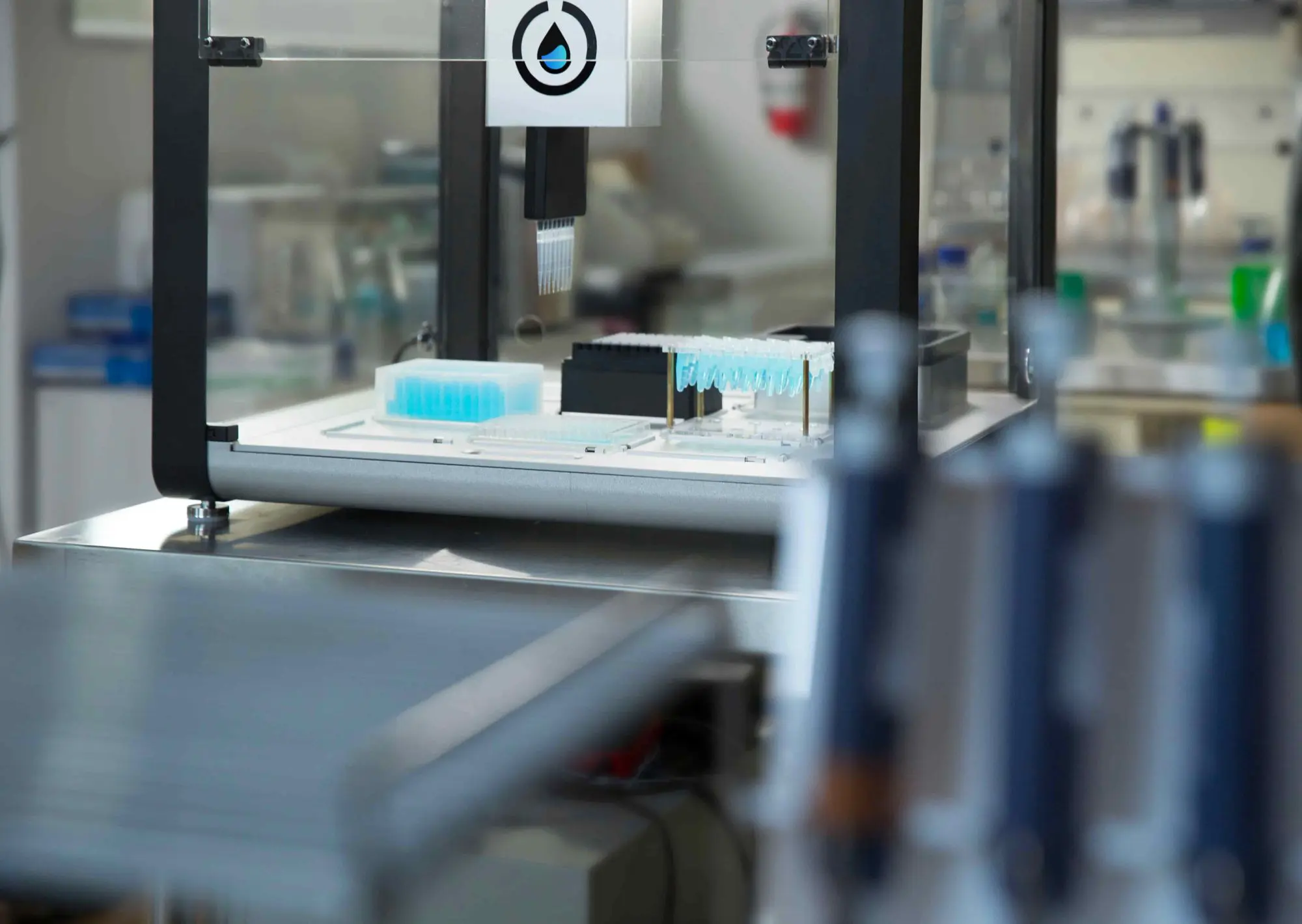
Accuracy in lab experiments is critical, but often difficult to achieve–especially in life science labs. This is largely because many protocols and procedures are done by hand, leaving systemic opportunities for pipetting error, materials waste and lost time.
Automation can remove those difficulties and greatly reduce inaccuracy to produce more consistent results. Here are 3 areas where automation can be particularly beneficial to life science labs.
1) Replicability
Replicability — or the ability of a researcher to test the viability of an experiment’s results by using the same methods on the same samples and checking whether the data sets agree — is key to conducting successful research. It is also the best way to ensure consistency from experiment to experiment.
But if you’re doing these procedures by hand, errors can occur based simply on who conducted the experiment. This is the myth of the “magic hands” in biology — a researcher who can perform an assay almost exactly the same way every time. There is often no documentation describing this “magic” technique, so there’s almost no way to accurately replicate it. Plus, any other person who does try to recreate a particular assay can still experience errors simply by using a different technique.
With automation, replicating your results is closer to downloading a protocol and hitting run on your robot. An assay is performed the same way every single time, removing any doubts or difficulties in the replication process.
2) Reproducibility
Reproducibility — or the ability to analyze an experiment’s original methods and data and use them to produce similar results in another lab — is also critical to performing successful research. It is also the best way to ensure consistency from protocol to protocol, as well as the best way to determine if data analysis can be successfully repeated.
Many labs still keep their collection of protocols in a hard copy form — PDFs in binders with notes scribbled in the margins that serve as guidelines. Because these protocols are often executed by hand, given a researcher’s interpretation of those notes, errors can be systemic through all aspects of a protocol from execution to results.
With automation, protocols do not need to be reinvented: they can be created once and run the same way every time – removing any opportunity for systemic errors. Plus, because documentation can be added, they are often more through, easily accessible and actionable than manual protocols.
3) Sharing
In addition to replicating and reproducing experiment protocols, the ability to share them is critical to continuing to create new knowledge and contribute to the legacy of scientific discovery. But there is no standard format or requirement for sharing methods in publication, or what reagents and labware were used. There’s no standard for sharing protocols, either, as most of that information is communicated in-person in the lab, shared in the binder, or informally communicated. Researchers also don’t share null data – meaning, they don’t share what didn’t work for them, or any insights that led them to their working method.
Automation provides a standard format for logging and sharing protocols, reagents, labware and any other necessary information needed to execute an experiment. It also removes all of the variables in sharing any of that information, and offers a common platform from which to share information with lab members and colleagues all over the world.
All of these benefits are not only helpful, but critical to the way life research is conducted. In biology, the only way to ensure all of these things is through automation.